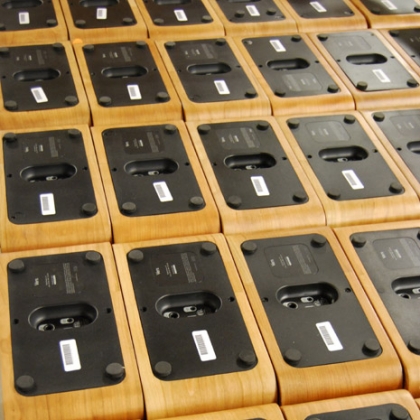When is the right time to develop a product end of life strategy? Now, roughly – give or take a day. Even though our first product has been in-market for about a year and we shouldn’t expect to ‘need’ a product take-back/recycling program for our customers for many years to come, we believe there is plenty that can be learned by working on it now. We’re testing our prototype process with a small batch of un-recoverable, stripped carcasses from early development and customer service returns; it turns out that our systems have been surprisingly easy to repair and upgrade, leaving very few to work with in this test. It’s an important victory for our sustainability mission; many early design decisions are already paying off. While our customer service return rate is fairly low (good quality), the scrap rate from those is even lower (good sustainable design features).
We started on the design process of this program as most do: we networked with others for advice, read through whatever available material we could find, even brought in an advisor in to look over our shoulder and check our work. We chose a recycler that had the same position as we do on e-waste recycling: they promised that no recovered materials would leave the country. Our tour of their facility answered (and generated) many questions about how our inbound material would be handled, how a system would be de-manufactured and materials separated and where they would end up. So here’s the challenge: we’re still trying to get further down stream, hopefully as far as seeing new raw material be made from our scrap material. The recycler said they had no problem introducing us to their PC board, plastic and wood reclamation resources, but have they come through? Not yet. Will they? We hope so.
Our first product, the Vers 2X, has only been on the market for about a year. With an estimated lifespan of five years, it does at times feel a bit early to be taking this step at this stage of our existence. As with my earlier piece here on the value of ‘up-streaming’ (visiting your suppliers’ suppliers), we are using this down-streaming process to understand where our materials end up and to improve our future products under development. It will only work, however, if we can get access to two or more levels of the downstream value chain.
When managing the parts of the product development we don’t own – contract manufacturing up front and electronics recycling on the back end in our case, we’ve learned that it all comes down to trust and transparency; our partners establish the first when they deliver the second. Our manufacturing partners have done a solid job of taking us up-stream and we are hoping our chosen recycling partner ‘candidate’ here comes through on the down-stream side.
We have picked up a couple things from the down-stream project that we are already applying:
Handle as much as you can yourself – prep your materials, it’s the only way to assure the right materials will end up in the right place – especially the low-value ones.
Avoid turn-key solutions – do your own integration of your downstream partners – again, this will assure that the highest percentage of any particular material ends up in the place where it will most likely be recycled, not land filled or sent to another country.
Don’t believe it until you see it – ask to see where each material ends up, ask for an intro to those who take your recycler’s materials. If they set you up without question, you’ve probably found a good one. If there is any hesitation, you may want to keep looking.
Run a test project – this will help sensitize your whole team to the downstream de-manufacturing challenge, and will help improve future products and processes as well.

